Noboru Ogata (Professor Emeritus, Kyoto University)
LANDSAT image of Tripolitania, Libya (four scenes joined).
In this webpage, we offer the records taken during our research trip in Tripolitania, Libya in December 2008. The research trip was made as a part of our research project headed by Professor Takura Izumi of Kyoto University. The important archaeological sites visited are Sabratha and Leptis Magna, which are registered as UNESCO World Heritage Sites. These two sites are city ruins, which began as Phoenician trading posts in the early period of the first millenium B.C. The sites grew into Punic cities under the influence of Carthage. After Carthage was defeated in the Punic War, Sabratha and Leptis Magna became controlled by the Roman Empire in the first century B.C. Under the Roman rule, these cities grew remarkably and their urban areas expanded. Leptis Magna was, in particular, provided with magnificent public buildings by the Empire because Emperor Septimius Severus (r. 193-211 A.D.) was grown up in the city. As the Roman Empire declined, the two cities faded away and buried in sand. As Roman cities, Sabratha and Leptis Magna had precisely planned layouts with main streets (cardo) as their central axes. They also had public buildings such as theaters and amphitheaters in common with other Roman cities. On the other hand, as Phoenician and Punic settlements, we suppose that they were much smaller and had no planned layouts.
[References]
- E. V. Caggarelli and G. Caputo translated from Italian by D. Ridgway, The Buried City: Excavations at Leptis Magna, Weidenfeld and Nicolson, 1964.
- K. D. Matthews, Cities in the Sand: Leptis Magna and Sabratha in Roman Africa, University of Pennsylvania Press, 1957.
- G. E. Markoe, Phoenicians, University of California Press, 2000.
December 22 : Arrived in Tripoli via Dubai. Stayed in Tripoli.
December 23 : Visited Japahiriya Museum in the morning. Walked around in the old town of Tripoli in the afternoon.
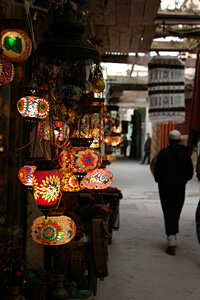 |
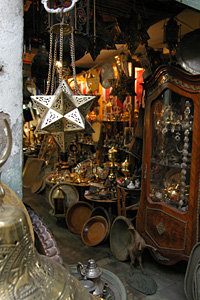 |
|
Souk in the old town of Tripoli |
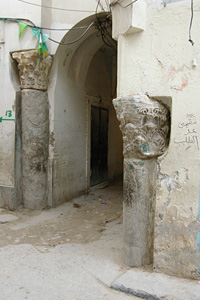 |
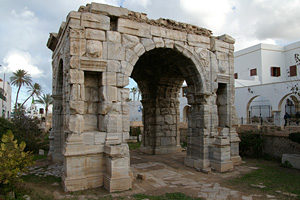 |
|
Monumental Arch of Marcus
Aurelius from the Roman era in the old town of Tripoli |
December 24 : Visited the city ruins of Sabratha. Sabratha was a port city of Punic and Roman periods.
 |
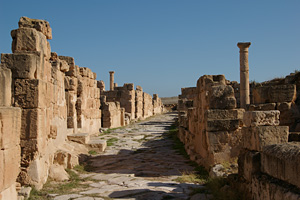 |
|
Street in the city ruins
of Sabratha |
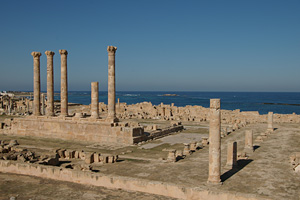 |
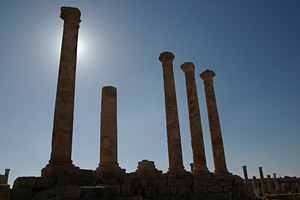 |
|
Columns of the East Forum Temple |
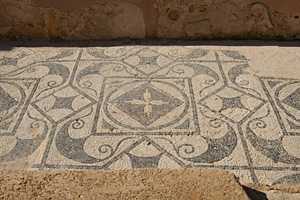 |
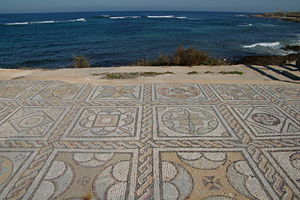 |
|
Colored mosaic pattern on the floor
of a bath by the sea |
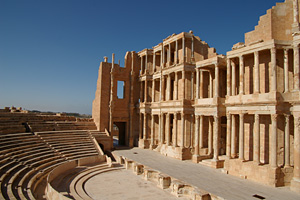 |
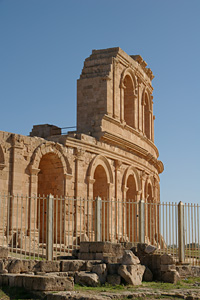 |
|
Theater of Sabratha, view
from outside |
December 25 : Traveled around in the Nafusa Highland, southwest from Tripoli. Visited native people’s settlements, which have curiously structured buildings and storehouses.
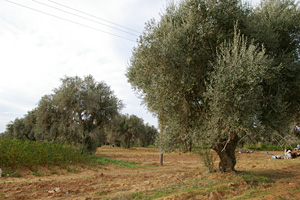 |
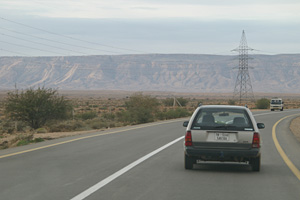 |
|
Nafusa Highlands |
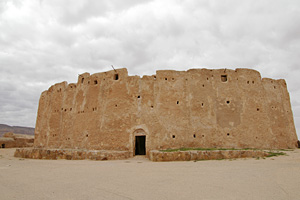 |
 |
|
Inside of the Qusar Al-Haj’s
storeage building |
 |
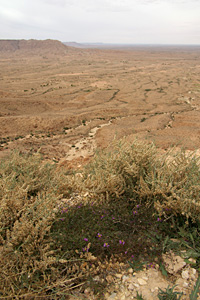 |
|
View from top of a cliff |
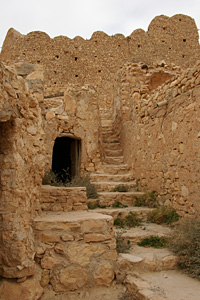 |
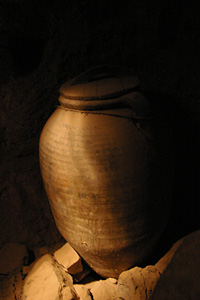 |
|
Ceramic container inside
the house |
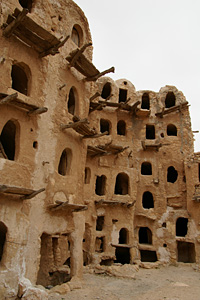 |
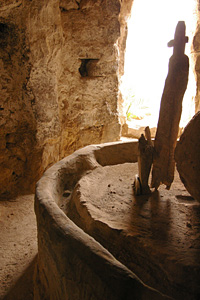 |
|
Olive press inside the
house |
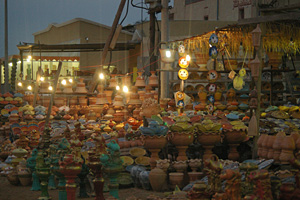 |
 |
|
Semi-underground residential complex |
December 26 : Traveled from Tripoli to Leptis Magna. Visited the city ruins of Leptis Magna. Stayed in Al-Khoms.
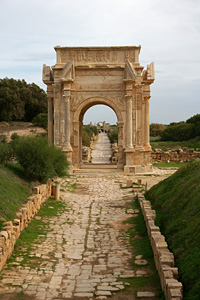 |
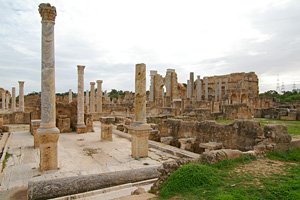 |
|
Hadrianic Bath |
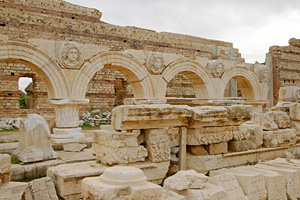 |
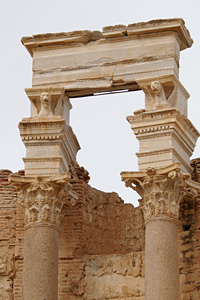 |
|
Severan Basilica |
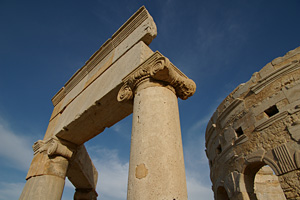 |
 |
|
Theater of Leptis Magna |
December 27 : Visited the eastern suburbs of Leptis Magna where the amphitheater and the circus are located. Then we walked westward along the beach to see remains of the harbor. In the evening we traveled back to Tripoli.
 |
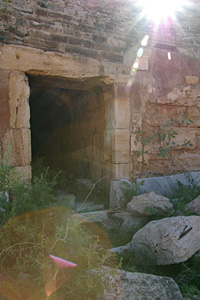 |
|
Entrance to the arena |
 |
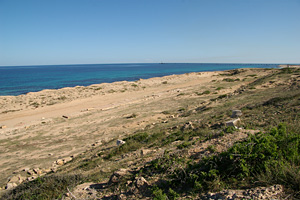 |
|
The circus next to the
amphitheater |
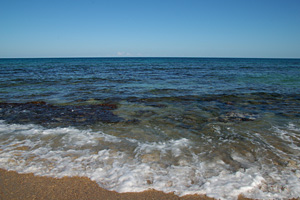 |
 |
|
Remains of a fish preserve on the
beach |
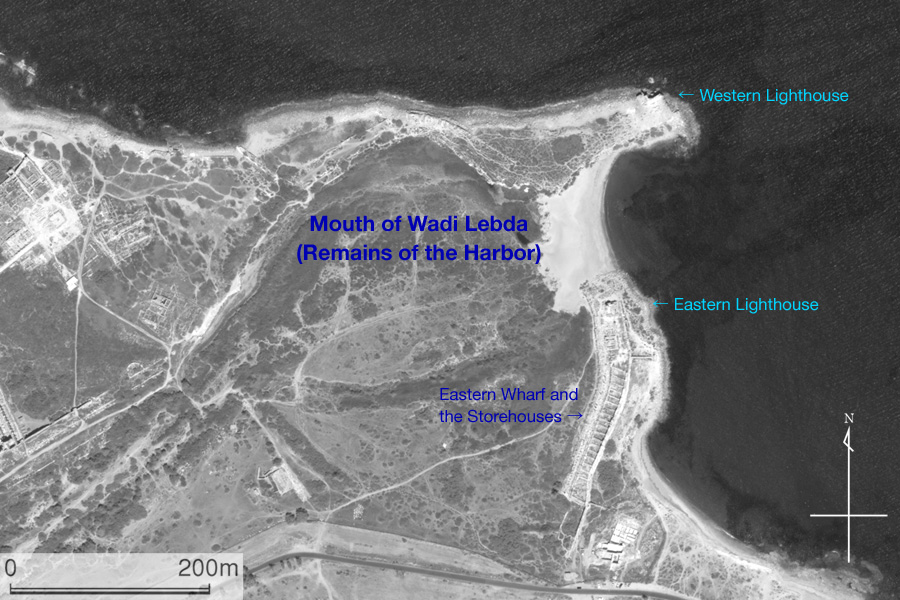 |
QuickBird satellite image over the the remains of the harbor of Leptis Magna, which is located at the mouth of Wadi Lebda (acquired on August 7, 2008 : © DigitalGlobe). Brakewaters separating the harbor from the open sea can be observed on the image. On each breakwater, you can also see storehouses regularly lined up and a lighthouse at the tip. The remains of the harbor of Leptis Magna is situated at the eastern end of the city ruins of Leptis Magna. It is filled up with sand, and we walked along the beach between eastern and western lighthouses. |
 |
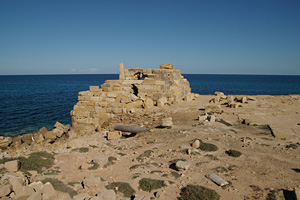 |
|
Remains of the lighthouse at the tip
of the western breakwater |
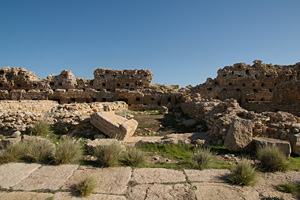 |
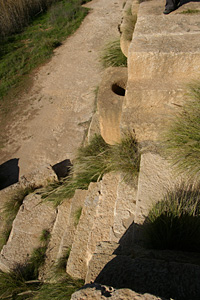 |
|
|
||
Remains of the wharf on the eastern breakwater with stairs and mooring
stones |
After coming back to Tripoli, we shopped around in the old town.
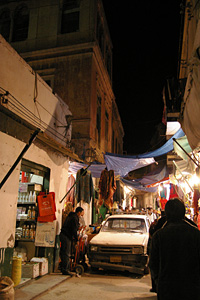 |
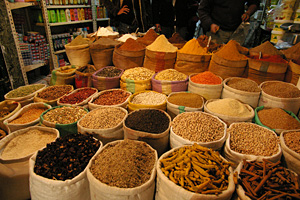 |
|
Spice shop along the souk |
December 28 : Visited Japahiriya Museum in the morning.
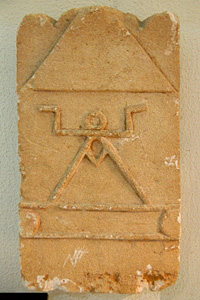 |
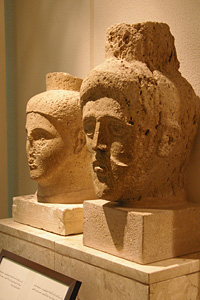 |
|
Images of people in Punic
style |
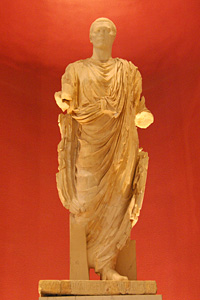 |
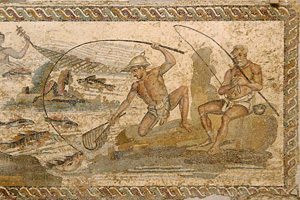 |
|
Masaic picture depicting
fishing people |
In the evening, we left Tripoli and flew to Dubai. But because of the flight’s delay, we had to stay in Dubai.
December 30 : Left Dubai and traveled back to Osaka.
Created by Noboru Ogata
Since 30/Jul/2009
![]()